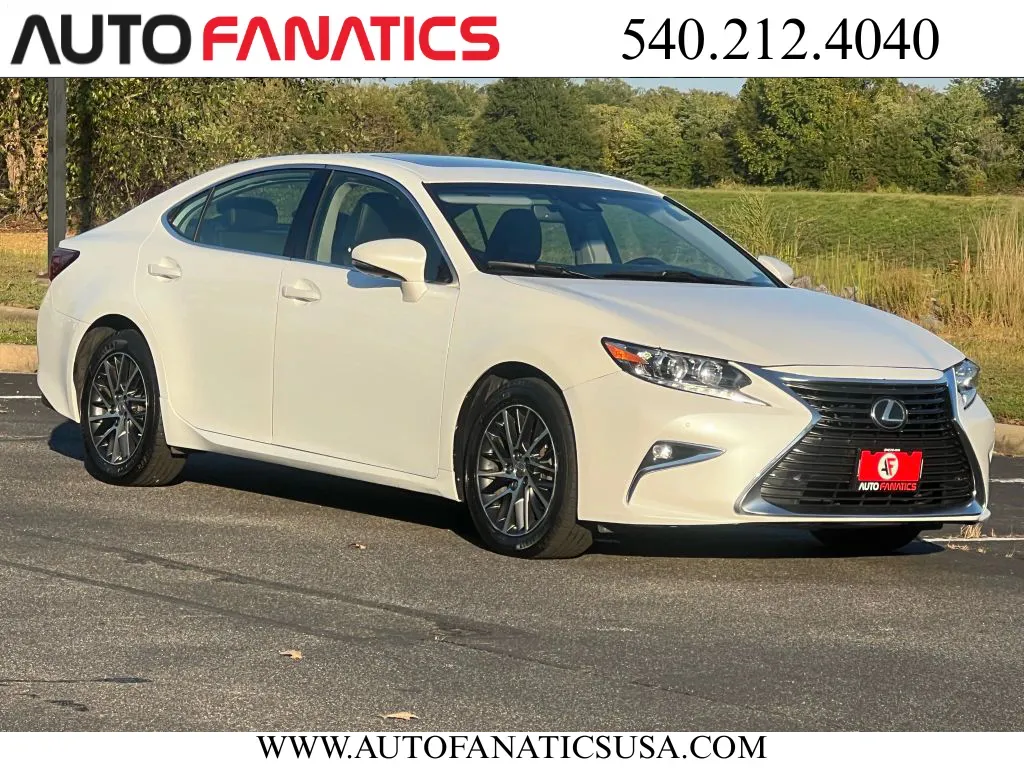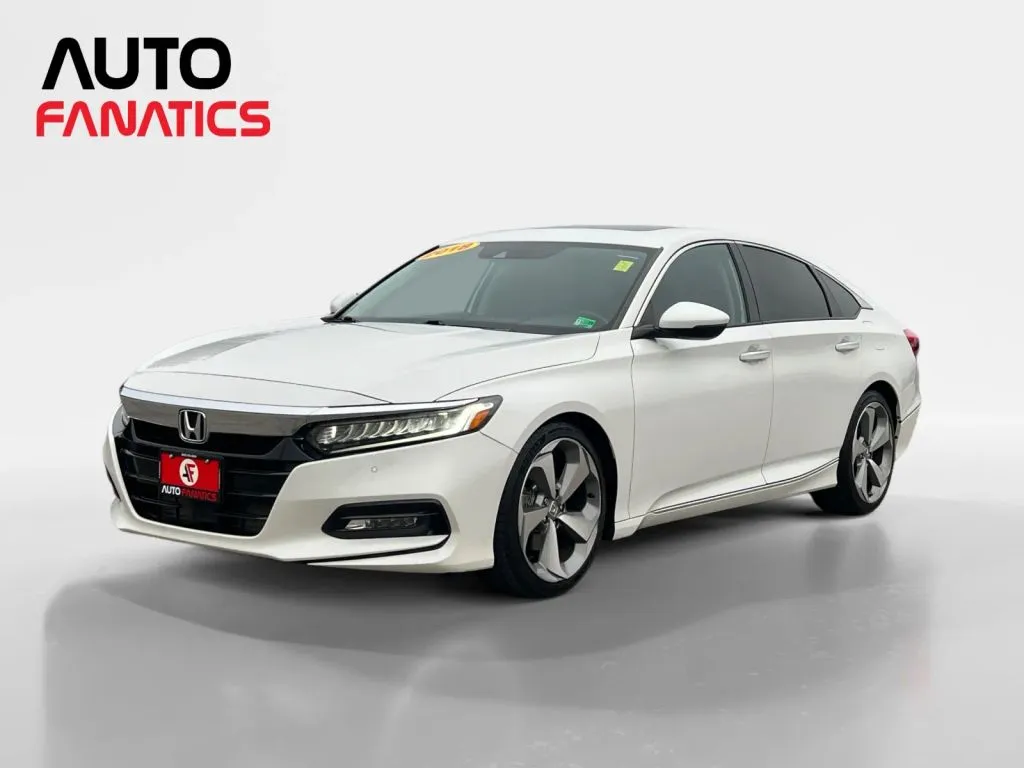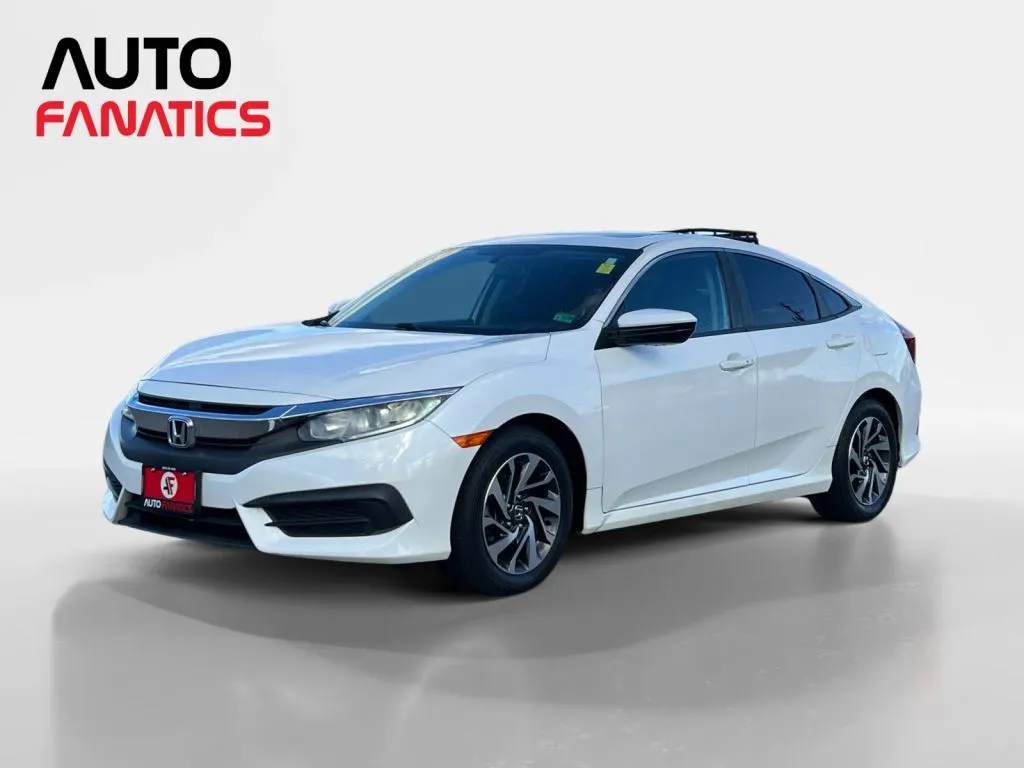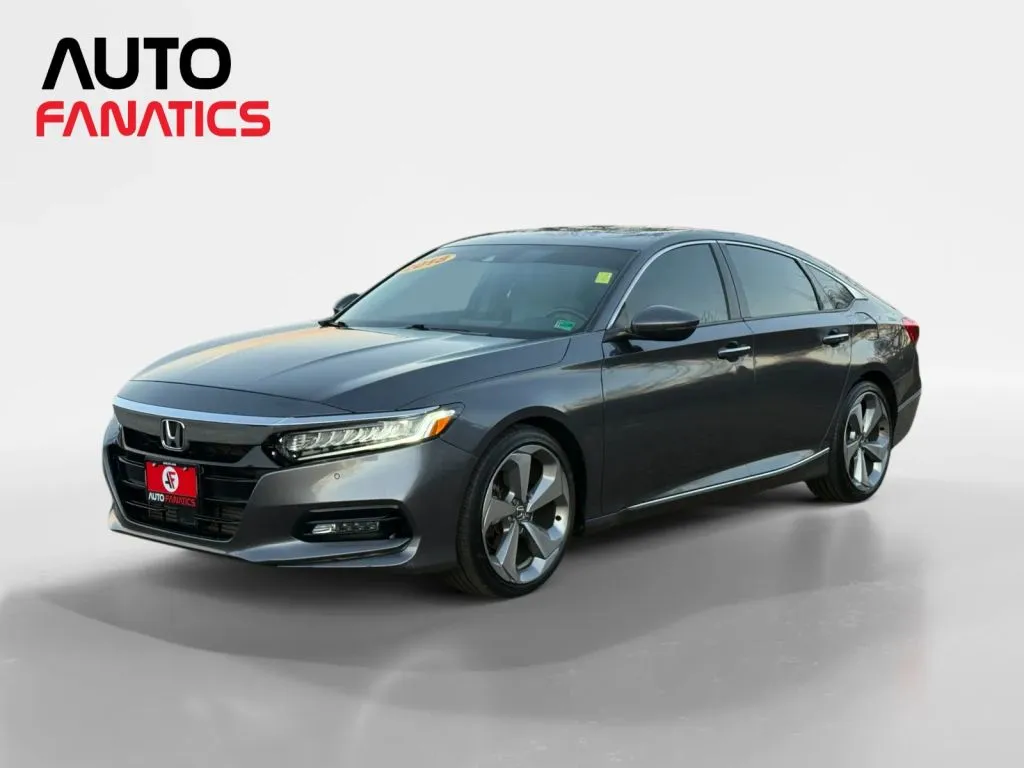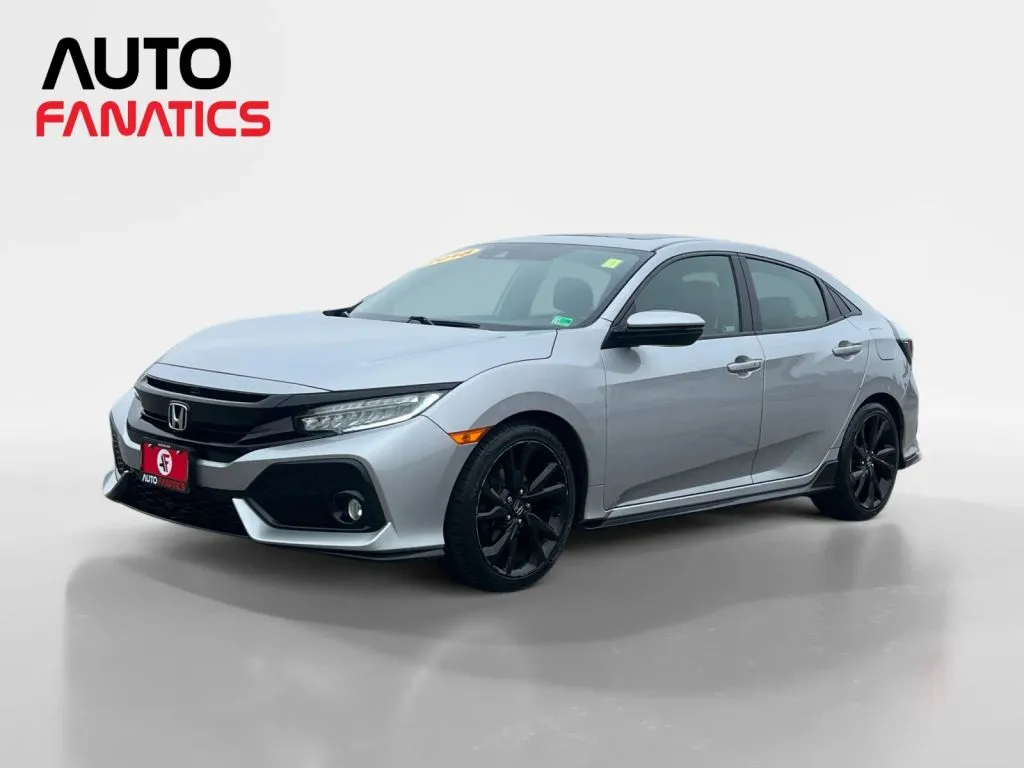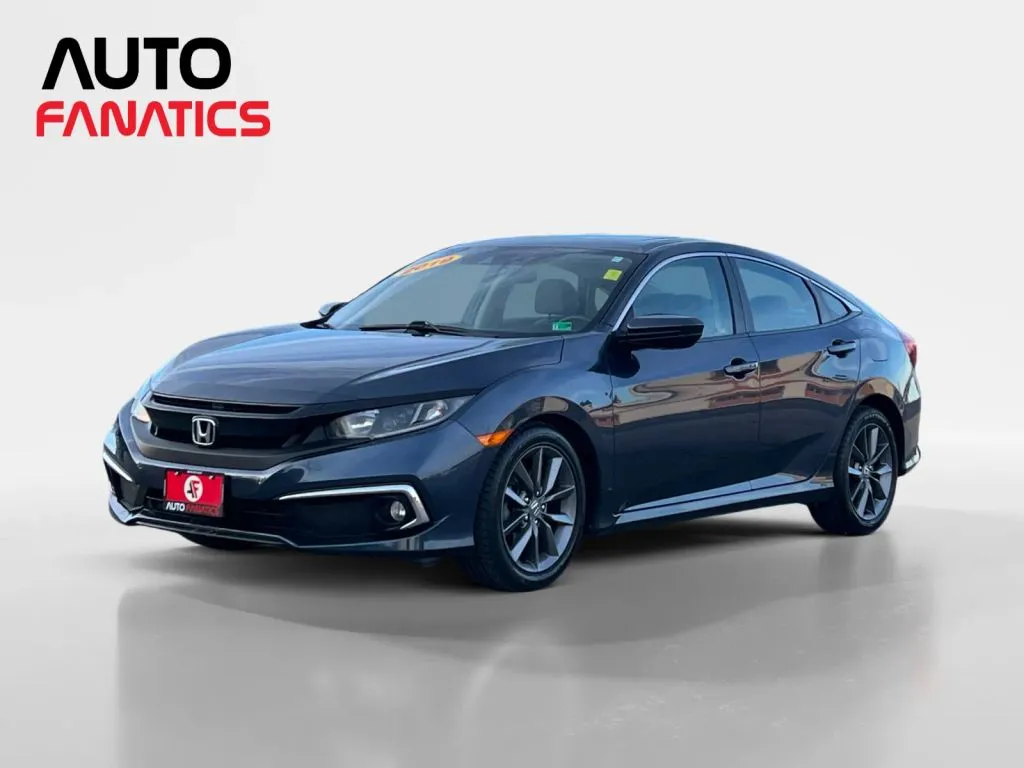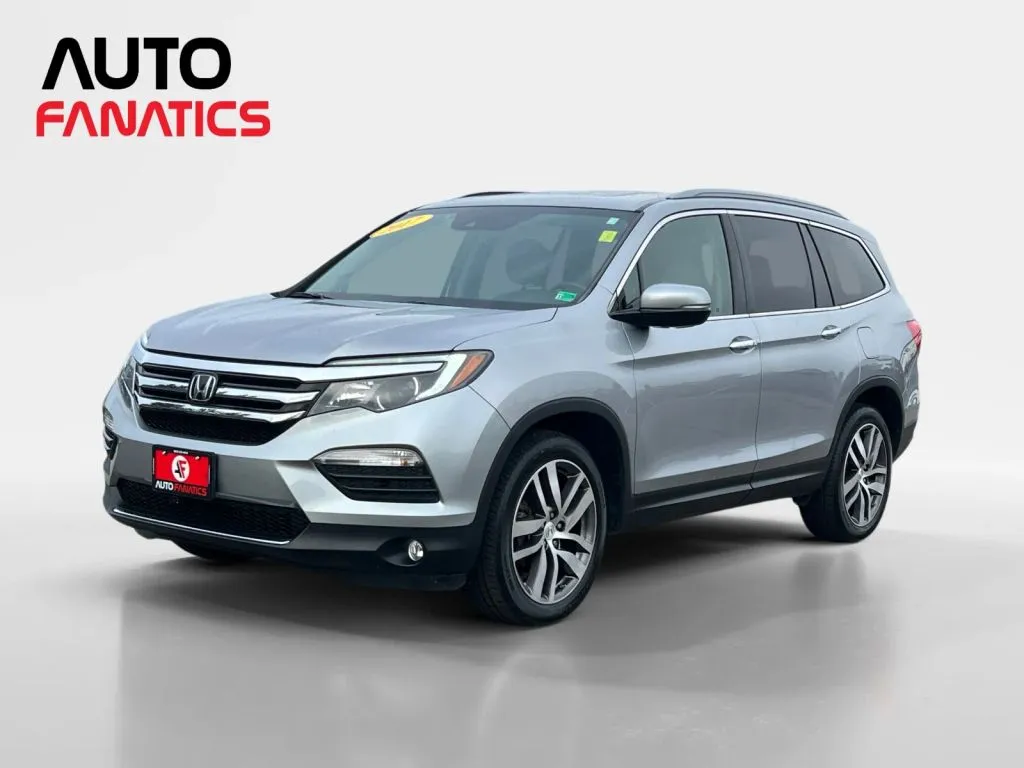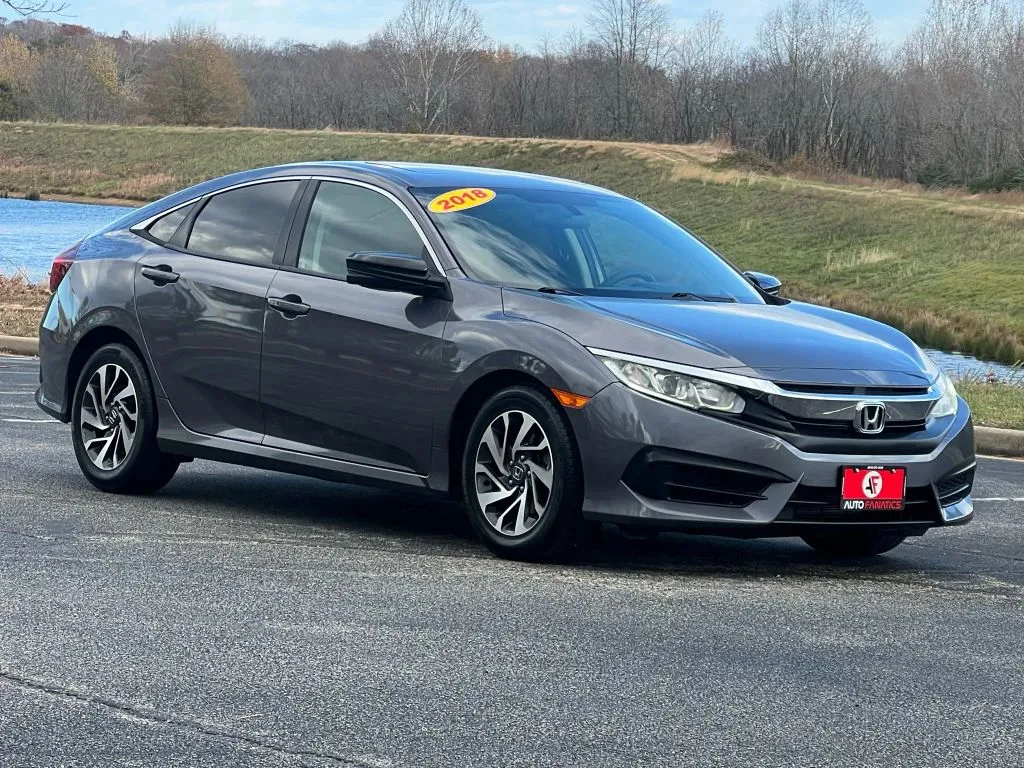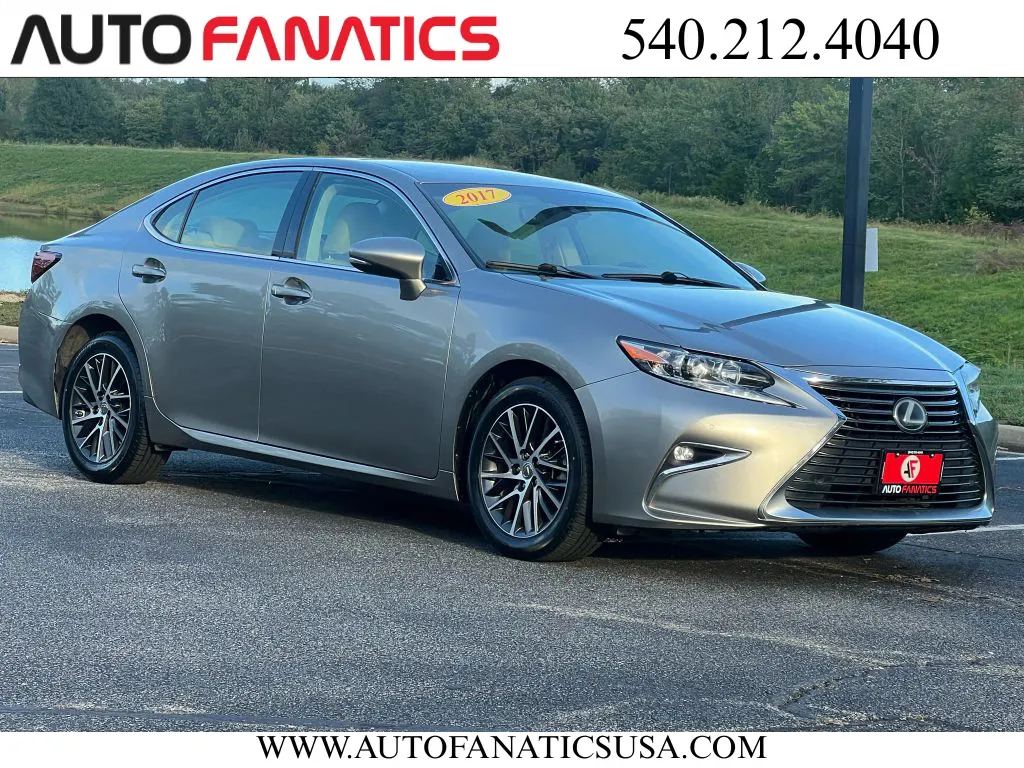How to Accurately Estimate Your Car Payment
A car payment can feel like a puzzle with a lot of moving pieces. There’s the vehicle’s price, the size of your down payment, the interest rate tied to your credit score, and the length of the loan term. Each piece directly impacts the final number. Instead of getting overwhelmed, think of it as a simple equation you can solve. When you take a few minutes to estimate your car payment, you see exactly how these components work together. This clarity allows you to adjust the variables—like increasing your down payment or shortening the loan term—to find a payment that fits your budget perfectly.
Key Takeaways
- Pay down your principal faster: Making payments that are even slightly larger than your required minimum can significantly shorten your loan term and reduce the total interest you pay. Every extra dollar goes straight to reducing the amount you owe.
- Re-evaluate your loan periodically: If your credit score improves or market interest rates drop, refinancing your auto loan can be a smart move. Securing a lower rate can free up cash in your monthly budget and lower the overall cost of your car.
- Turn your car into an asset: By managing your loan effectively, you build equity—the difference between your car's value and what you owe. Positive equity becomes a valuable tool you can use as a down payment on your next vehicle.
What Goes Into Your Car Payment?
Figuring out your potential car payment can feel like solving a puzzle. It’s not just the sticker price divided by the number of months you plan to pay. Several key pieces come together to determine that final monthly number. Understanding these components puts you in the driver's seat, helping you find a vehicle that fits your life and your budget. Let's break down exactly what goes into your car payment so you can shop with confidence.
The Purchase Price & Your Down Payment
The journey to your monthly payment starts with two numbers: the vehicle's price and your down payment. While it’s tempting to focus only on getting the lowest monthly payment, it's crucial to look at the total cost of the car first. A larger down payment is your best tool for reducing the overall loan amount. The more you pay upfront, the less you have to borrow. This not only lowers your monthly bill but also reduces the total interest you'll pay over the life of the loan. Think of it as a head start on your investment. Before you start browsing, decide what you can comfortably put down on one of our quality used cars.
How Your Credit Score Affects the Interest Rate
Your credit score is one of the most powerful factors in your auto loan. Lenders use this three-digit number to gauge your creditworthiness, and it directly influences the interest rate (or Annual Percentage Rate, APR) they offer you. A higher credit score generally signals to lenders that you're a lower-risk borrower, which means you'll likely qualify for a lower interest rate. Even a small difference in your rate can save you hundreds, or even thousands, of dollars over the course of your loan. That’s why it’s a great idea to get pre-qualified early in the process to see where you stand.
The Impact of Your Loan Term
The loan term is simply the amount of time you have to repay the loan, usually expressed in months (e.g., 48, 60, or 72 months). Here’s the trade-off: a longer loan term will result in a lower monthly payment, but you'll end up paying more in total interest. A shorter term means a higher monthly payment, but you’ll pay the car off faster and save money on interest. The best approach is to choose the shortest loan term with a monthly payment you can comfortably manage. Our car loan calculator is a fantastic tool for playing with different terms to see how they impact both your monthly payment and the total cost.
Factoring in Taxes and Fees
The price you see on the window sticker isn't the final number you'll finance. You also need to account for taxes and fees, which can add a significant amount to your total. These costs typically include state and local sales tax, title and registration fees, and a dealership documentation fee (or "doc fee"). Most buyers choose to roll these costs into their auto loan. A trustworthy dealership will always be transparent and walk you through every line item so there are no surprises. At Auto Fanatics, our straightforward process is a key reason we have earned over 500 five-star reviews from customers right here in the Fredericksburg area.
What's Included in Your Monthly Bill?
When you’re figuring out your car budget, it’s easy to focus only on the sticker price. But your actual monthly payment is a mix of several different costs. Understanding what goes into that final number helps you budget accurately and avoid any surprises down the road. Think of it less as a single payment and more as a bundle of costs that cover everything from the car itself to the legal requirements of owning it. Let's break down exactly what you can expect to see rolled into your auto loan and your overall monthly car expenses.
The Vehicle's Price Tag
The foundation of your monthly payment is the vehicle's purchase price. This isn't just the number you see on the window sticker; it’s the final negotiated price plus any applicable sales tax and dealership fees. This total amount becomes the principal of your loan—the initial sum you borrow. Your down payment is subtracted from this principal, so the more you put down, the less you'll need to finance. The remaining balance is what you’ll pay back, with interest, over the life of the loan. When you browse our inventory of used cars, remember that the listed price is the starting point for calculating your total loan amount.
Required Car Insurance
Car insurance isn't optional—it's a legal requirement to drive in Virginia, and it's a significant part of your monthly car budget. While it’s a separate bill from your car loan, you can't have one without the other. If you're financing your vehicle, your lender will almost certainly require you to carry "full coverage" insurance, which includes both collision and comprehensive policies. This protects their investment (and yours!) from damage or theft. Insurance rates vary widely based on your driving record, the car you choose, and your coverage levels, so it’s smart to get quotes and factor this cost into your monthly budget before you commit to a car.
Optional Protection Plans
While not required, an optional protection plan can be a smart investment, especially when buying a used vehicle. These plans, often called extended warranties or vehicle service contracts, help cover the cost of unexpected mechanical breakdowns after the factory warranty has expired. This can save you from major out-of-pocket expenses for repairs to the engine, transmission, or other critical components. You can often roll the cost of one of these automotive protection plans into your auto loan, which adds a small amount to your monthly payment in exchange for significant peace of mind.
Registration and Documentation Fees
When you buy a car, there are a few one-time administrative costs you’ll need to cover. These include title and registration fees, which are paid to the state of Virginia to make you the official owner of the vehicle. There is also typically a dealership documentation fee, or "doc fee," which covers the cost of processing all the paperwork, like the title application and sales contracts. These fees can either be paid upfront in cash or, in many cases, rolled into your total loan amount. We believe in transparency, so feel free to contact us with any questions about these costs.
Other Costs to Keep in Mind
Your financial responsibility doesn't end with the monthly loan payment. To create a truly realistic budget, you need to account for the ongoing costs of car ownership. This includes fuel, which can fluctuate, and routine maintenance like oil changes, tire rotations, and brake inspections. You should also set aside some money for eventual repairs that may not be covered by a warranty, such as new tires or a battery. Using a car loan calculator can help you see your estimated monthly payment, giving you a clearer picture of how much room you'll have in your budget for these other essential expenses.
How to Use a Car Loan Calculator
A car loan calculator is one of the most powerful tools you can use when you’re starting to think about buying a vehicle. It takes the guesswork out of budgeting by giving you a clear estimate of your monthly payment and the total cost of your loan. Instead of getting attached to a car that’s outside your budget, you can shop with confidence, knowing exactly what you can comfortably afford. Think of it as your financial co-pilot, helping you make a smart decision before you even step onto the lot. It’s all about putting you in control of the process.
What Information You'll Need
Before you start plugging numbers into a calculator, it helps to have a few key pieces of information ready. This will make your estimate much more accurate. You’ll want to have an idea of the vehicle’s price, the amount of your down payment, and the value of any vehicle you plan to trade in. You’ll also need to decide on a loan term, which is the number of months you’ll have to pay back the loan. Finally, you’ll need an estimated interest rate, which is largely based on your credit score. Having these figures handy will give you a realistic picture of your potential payment.
A Quick Step-by-Step Guide
Using a car loan calculator is surprisingly simple. First, enter the total price of the car you’re considering. Next, subtract any cash down payment you plan to make and the value of your trade-in. This gives you the total amount you need to finance. After that, input your estimated interest rate and choose a loan term (like 48, 60, or 72 months). The calculator will instantly show you your estimated monthly payment. You can adjust the numbers—like increasing your down payment or shortening the loan term—to see how it impacts your payment and find a scenario that works for you.
Using the Auto Fanatics Calculator
To make things even easier, we have a dedicated car loan calculator right on our website. Our tool is designed to be straightforward, letting you quickly estimate your monthly payments for any vehicle in our inventory. Just enter the vehicle price, your down payment, your estimated interest rate, and your desired loan term. It’s a no-pressure way to explore your options and understand your budget before you even think about applying for a loan. This way, you can focus on finding the perfect car, truck, or SUV for your needs without any surprises.
How to Understand the Results
Once you’ve entered your information, the calculator will display more than just your monthly payment. Pay close attention to the other figures, too. You’ll see the total interest you’ll pay over the life of the loan and the total amount you’ll pay back altogether. Seeing these numbers helps you understand the true cost of financing the vehicle. A lower monthly payment might seem appealing, but if it’s attached to a very long loan term, you could end up paying significantly more in interest. This complete picture is essential for making a financially sound decision.
Common Mistakes to Avoid
One of the biggest mistakes people make is focusing only on the monthly payment. While it’s important that the payment fits your budget, don’t let it be the only factor you consider. A dealership could stretch your loan term to get you a low payment, but this means you’ll pay more in interest over time. Instead, focus on negotiating a fair price for the vehicle first. Also, be sure to factor in the total cost of the loan, not just the monthly bill. Once you have a clear budget, you can confidently get approved for financing that truly works for you.
Smart Ways to Lower Your Monthly Payment
Finding a car you love is the fun part, but making sure the payment fits your budget is what makes it a smart purchase. The good news is you have more control over that monthly number than you might think. With a few strategic moves, you can significantly reduce your payment and the total amount you pay over the life of the loan. It’s all about planning ahead and knowing which levers to pull. Let’s walk through some of the most effective ways to make your next car more affordable.
Improve Your Credit Score
Your credit score is one of the biggest factors lenders use to set your interest rate. A higher score shows you have a history of responsible borrowing, which makes you a lower risk. Lenders reward this with lower interest rates, which directly translates to a lower monthly payment. Before you start shopping, it’s a great idea to check your credit report for any errors and see where you stand. Simple habits like paying your bills on time and keeping your credit card balances low can make a real difference. A little effort here can save you hundreds, or even thousands, over the course of your loan.
Plan for a Larger Down Payment
Making a substantial down payment is one of the quickest ways to lower your monthly car payment. The more money you put down upfront, the less you have to borrow. Experts often recommend a down payment of at least 20% of the vehicle's purchase price. This not only shrinks your loan amount but can also help you secure a better interest rate from lenders. You can use a car loan calculator to see exactly how different down payment amounts affect your monthly bill. It’s a powerful tool for finding a payment that feels comfortable for your budget.
Tips for Negotiating the Price
When you’re discussing numbers, always focus on the total price of the car, not just the monthly payment. Some dealerships might try to fit a car into your monthly budget by extending the loan term, but this means you’ll pay much more in interest over time. At Auto Fanatics, we believe in total transparency, which is why our customers give us five-star reviews. We’ll work with you on a fair price for the vehicle first. Once that’s settled, we can explore financing options that give you a monthly payment you’re happy with, without any hidden costs or surprises.
Choose the Right Loan Length
The length of your loan, or the term, has a major impact on your payment. A longer term, like 72 or 84 months, will result in a lower monthly payment, but you'll pay significantly more in interest. A shorter term, like 48 or 60 months, means higher payments but less interest paid overall. The key is to find a balance. Choose the shortest loan term you can comfortably afford. This approach helps you pay off your car faster and saves you money in the long run. Our team can help you get approved and review different term lengths to find the perfect fit.
Work With a Co-signer
If you have a limited credit history or a score that’s still a work in progress, bringing on a co-signer could be a great option. A co-signer—usually a family member or close friend with a strong credit history—agrees to take responsibility for the loan if you’re unable to make payments. Their good credit can help you qualify for a much lower interest rate than you could get on your own. This can dramatically lower your monthly payment and make it easier to get into the car you need while you continue to build your own credit.
The True Cost of Owning a Car
Your monthly car payment is just one piece of the puzzle. To create a truly accurate budget, you need to look beyond that number and consider the total cost of ownership. These are the ongoing expenses that come with having a car in your driveway, from routine upkeep to those surprise repairs. Thinking about these costs upfront helps you choose a vehicle that fits comfortably into your financial life, ensuring your new ride is a source of joy, not stress. Let's break down the other expenses you should plan for.
Regular Maintenance and Repairs
Every car needs regular care to stay in great shape. This includes routine services like oil changes, tire rotations, and brake inspections. Beyond that, unexpected repairs can pop up. On average, you can expect to spend over $1,400 a year on car maintenance, though this varies by the car's age and model. While we meticulously inspect every vehicle before it joins our inventory, planning for these costs is a smart move for any owner. Setting aside about $120 a month for maintenance can provide a great financial cushion for both planned service and surprise fixes.
Budgeting for Gas
Fuel is one of the most significant and variable costs of owning a car. Your monthly gas bill will depend on how much you drive, your car's fuel efficiency, and local gas prices. Think about your daily commute, weekend trips, and regular errands to estimate your monthly mileage. From there, you can look at the MPG (miles per gallon) rating for the cars or SUVs you're considering to get a clearer picture. Keeping an eye on fuel costs helps you make an informed decision and avoid surprises at the pump each month.
Annual Property Tax
Here in Virginia, vehicle owners pay a personal property tax each year. This tax is based on your car's assessed value and the tax rate in your specific city or county, whether you're in Fredericksburg, Stafford, or Spotsylvania. It’s an expense that’s easy to forget but important to include in your annual budget. You can typically find the current tax rate on your local government's website. Factoring this in ensures you're prepared when the bill arrives and gives you a more complete understanding of the total cost of ownership.
Understanding Gap Insurance
Gap insurance is an optional but often wise addition to your auto loan. If your car is stolen or totaled in an accident, your standard insurance policy will pay out the vehicle's current market value. The problem? That amount might be less than what you still owe on your loan. Gap insurance covers this "gap," so you aren't left making payments on a car you can no longer drive. It’s especially helpful if you have a small down payment or a longer loan term. Our team can walk you through your options, including our protection plans.
Planning for Emergencies
Life happens, and sometimes that means a flat tire, a dead battery, or a minor fender bender. It’s a great idea to have a separate emergency fund specifically for your car. This isn't for routine maintenance but for those truly unexpected events that your regular budget might not cover. Having a few hundred dollars set aside can turn a stressful situation into a manageable inconvenience. It’s all about creating peace of mind so you can handle whatever the road throws your way without derailing your financial goals.
How to Find the Best Auto Loan
Finding the perfect car is only half the equation; securing the right auto loan is what makes it a smart financial move. The loan you choose affects your monthly payment and the total amount you’ll pay over time. Taking a little time to understand your options can save you a significant amount of money and help you drive away with confidence. Think of it as the final, crucial step in your car-buying process. By getting pre-qualified, comparing offers, and understanding the terms, you put yourself in the driver's seat of your finances. Here’s how to find a loan that fits your budget and goals.
Get Pre-Qualified Before You Shop
One of the smartest things you can do before stepping onto a car lot is to get pre-qualified for a loan. This process gives you a realistic idea of how much you can borrow and at what interest rate, all based on a soft credit inquiry that won’t affect your score. Walking in with a pre-qualification letter shows that you’re a serious buyer and gives you a strong starting point for negotiations. It sets a clear budget, so you can focus your search on cars, trucks, and SUVs you know you can comfortably afford. You can even get pre-qualified with Capital One right through our website to see where you stand.
Compare Offers from Different Lenders
Don’t feel obligated to accept the first financing offer you receive. Rates and terms can vary widely between lenders, so it pays to shop around. Check with your personal bank and local credit unions, as they often offer competitive rates to their members. We also work with a network of trusted lenders to help our customers find great financing options. By comparing a few different offers, you can ensure you’re getting the best possible deal for your financial situation. The goal is to find a loan with a competitive interest rate and terms that work for you. You can start the process by filling out our secure online finance application.
Understand Your APR
While the monthly payment is important, the Annual Percentage Rate (APR) gives you a truer picture of the loan's cost. The APR includes the interest rate plus any lender fees, showing you the total cost of borrowing for one year. A salesperson might focus on getting you a low monthly payment by suggesting a longer loan term, but this often means you’ll pay much more in interest over time. Always ask about the APR and the total financing cost. Use a car loan calculator to see how different interest rates and loan terms will impact your total cost before you commit.
Always Read the Fine Print
The loan agreement is a binding contract, so it’s essential to read and understand it completely before you sign. Look for key details like the exact loan amount, the APR, the number of payments, and the monthly payment amount. Check for any mention of a prepayment penalty, which is a fee for paying off your loan early. A transparent lender will gladly take the time to explain every part of the agreement and answer all your questions. Our straightforward process is one of the reasons we have over 500 five-star customer reviews, and we’re committed to making sure you feel confident in your financing.
Red Flags to Watch For
A trustworthy lender will be transparent and prioritize your understanding. Be cautious if a salesperson focuses only on the monthly payment while avoiding conversations about the vehicle’s total price or the APR. Another red flag is being pushed into an excessively long loan term, such as 84 or 96 months, which can increase the total interest paid and leave you owing more than the car is worth. You should also be wary of loans that have unnecessary add-ons bundled in without your explicit consent. At Auto Fanatics, our no-pressure approach is central to who we are, and we believe in helping you make an informed decision.
Create a Realistic Car Budget
Setting a budget is the most empowering step you can take before you start looking for your next car. It puts you in the driver’s seat, ensuring you find a vehicle that fits your lifestyle and your finances. A well-planned budget goes beyond just the monthly payment; it considers the total cost of ownership, helping you make a confident and sustainable choice. This isn't about limiting your options—it's about finding the right option without any financial stress later on. At Auto Fanatics, we believe an informed buyer is a happy buyer, which is why we encourage everyone to map out their budget first. It’s a key part of the transparent, no-pressure experience that has earned us over 500 five-star reviews from your Fredericksburg neighbors.
Follow the 20/4/10 Rule
If you’re not sure where to begin, the 20/4/10 rule is a fantastic guideline for smart car buying. Think of it as a simple recipe for financial success. First, aim for a 20% down payment. Putting down at least 20% on your vehicle helps reduce the total amount you need to finance, which can lead to lower monthly payments and less interest paid over time. Next, choose a loan term of no more than four years (48 months). While longer terms might offer a lower payment, you end up paying much more in interest. Finally, ensure your total monthly car expenses—including your payment, insurance, and gas—don't exceed 10% of your gross monthly income. This keeps your transportation costs manageable and your overall budget healthy.
Balance Your Car Payment with Other Expenses
Your car payment is just one piece of your financial puzzle. Before you commit, take a clear look at your entire monthly budget. It's crucial to ensure that your car payment fits comfortably alongside your other essential expenses like housing, utilities, groceries, and savings goals. A payment that looks affordable on its own can quickly become a strain when viewed in the context of your complete financial picture. A great way to see how different scenarios would work is to use a Car Loan Calculator to experiment with numbers. This simple step helps you find a payment that you can truly afford without sacrificing your financial well-being elsewhere.
Avoid Common Budgeting Mistakes
It’s easy to get caught up in the excitement of car shopping, but a few common mistakes can lead to budget trouble. One of the biggest is focusing only on the monthly payment. A low payment might be attached to a very long loan term, meaning you'll pay significantly more in interest. Another pitfall is forgetting to research the vehicle's total cost, including potential interest rates and fees. The best way to avoid these issues is by getting pre-qualified for a loan before you even start browsing. Knowing what you can afford ahead of time gives you a firm budget to stick to, making the entire process smoother and more transparent.
Plan for Future Costs
The sticker price is just the beginning. To create a truly realistic budget, you need to consider the total cost of ownership. This includes all the expenses that come after you drive off the lot. Think about car insurance, which can vary depending on the make and model you choose. Factor in routine maintenance like oil changes and new tires, as well as the average cost of fuel for your daily commute. Since unexpected issues can happen, it’s also wise to have a small fund for potential repairs. Considering these future costs upfront prevents surprises and ensures your new-to-you vehicle remains a joy, not a burden. For extra peace of mind, you can also explore protection plans that help cover unforeseen mechanical issues.
How to Manage Your Car Loan
Getting the keys to your new-to-you car is an exciting moment, but your financial journey with the vehicle is just beginning. Managing your auto loan effectively is just as important as securing a great rate in the first place. Smart loan management can save you hundreds or even thousands of dollars, reduce financial stress, and help you build equity faster. It’s all about having a plan that works for your budget and long-term goals. Think of your loan not as a burden, but as a tool you can control. By understanding a few key strategies, you can take charge of your payments, make your car a valuable asset, and keep your overall financial health in top shape. Let’s walk through some practical ways to handle your car loan after you’ve driven off the lot.
The Benefits of Making Extra Payments
Paying a little extra on your car loan each month can have a big impact. Any amount you pay over your required minimum goes directly toward the principal balance. This reduces the total interest you'll pay over the life of the loan and helps you pay it off sooner. You could round up your payment to the nearest $50, make one extra payment per year, or use a tool like our car loan calculator to see how different amounts speed up your payoff date. Before you start, it’s a good idea to check with your lender to ensure there are no prepayment penalties and that your extra funds are being applied correctly to the principal.
When to Consider Refinancing
Refinancing your auto loan could be a smart move if your financial situation has improved since you first bought your car. If your credit score has gone up or if general interest rates have dropped, you might qualify for a lower rate. Securing a better rate can lower your monthly payments, reduce the total interest you pay, or both. It’s a great way to free up cash in your monthly budget. The best time to explore refinancing is typically after you’ve made at least six months of on-time payments. You can always get pre-qualified to see what rates you might be eligible for without impacting your credit score.
Build Equity in Your Vehicle
Equity is the difference between what your car is worth and how much you still owe on your loan. As you make payments, your loan balance decreases and your equity grows. Building equity is important because it turns your car into a stronger financial asset. When you’re ready for your next vehicle, having positive equity means you can use that value as a down payment. While selling privately can sometimes get you more money, trading in your vehicle is often more convenient. Plus, in Virginia, you only pay sales tax on the difference between the new car’s price and your trade-in’s value, which can lead to significant savings. You can easily get your trade-in value online to see where you stand.
Fit Your Car into Your Financial Goals
While a low monthly payment is appealing, it shouldn’t be the only factor you consider. A longer loan term might offer a lower payment, but you'll pay more in interest over time. It’s crucial to look at the total cost of the loan and ensure it aligns with your broader financial goals, like saving for a house or paying down other debt. Think about how your car payment fits into your complete budget. A reliable vehicle is a necessity, but it shouldn't prevent you from making progress elsewhere. By focusing on the total price and a loan term you’re comfortable with, you can make a choice that supports your financial well-being for years to come.
Related Articles
- Car Loans Calculator: The Ultimate User's Guide
- Monthly Car Payment Calculator: Find Your Budget
- How to Estimate Car Payment Monthly Accurately
- How to Use a Calculator to Estimate Car Payment
- Car Payment Estimate Calculator: A Complete Guide
Frequently Asked Questions
What's more important: the monthly payment or the car's total price? While it’s tempting to focus only on the monthly payment, the smartest approach is to negotiate the vehicle's total price first. A dealership can make almost any car seem affordable by stretching the loan out over a very long time, but this means you'll pay much more in interest. By settling on a fair purchase price first, you put yourself in a much stronger position to then find a loan term and payment structure that truly works for your financial goals.
How much should I actually put down on a car? The common guideline is to aim for a down payment of at least 20% of the car's purchase price. While this isn't a strict requirement, a larger down payment is one of the most powerful tools you have. It directly reduces the amount you need to borrow, which lowers your monthly payment and decreases the total interest you'll pay. It also helps you build equity in your vehicle much faster.
Can I get a loan with less-than-perfect credit? Yes, it is often possible to secure an auto loan even if your credit score isn't perfect. Having a larger down payment or a co-signer with a strong credit history can significantly improve your chances of approval and help you get a better interest rate. We work with a wide network of lenders and are experienced in helping people from various financial situations find a loan that works for them.
Why is getting pre-qualified so important before I start shopping? Getting pre-qualified for a loan before you shop is like creating a roadmap for your purchase. It gives you a clear and realistic understanding of how much you can afford to borrow and what your interest rate will likely be. This allows you to shop with confidence, knowing which vehicles fit within your budget, and it turns you into a more empowered negotiator when you're ready to make a deal.
Is a longer loan term a bad idea if it makes the payment fit my budget? A longer loan term can provide immediate relief by lowering your monthly payment, but it comes with a significant trade-off. You will pay much more in total interest over the life of the loan, and it will take you longer to build equity. The best strategy is to choose the shortest loan term that still offers a monthly payment you can comfortably manage without straining your overall budget.

